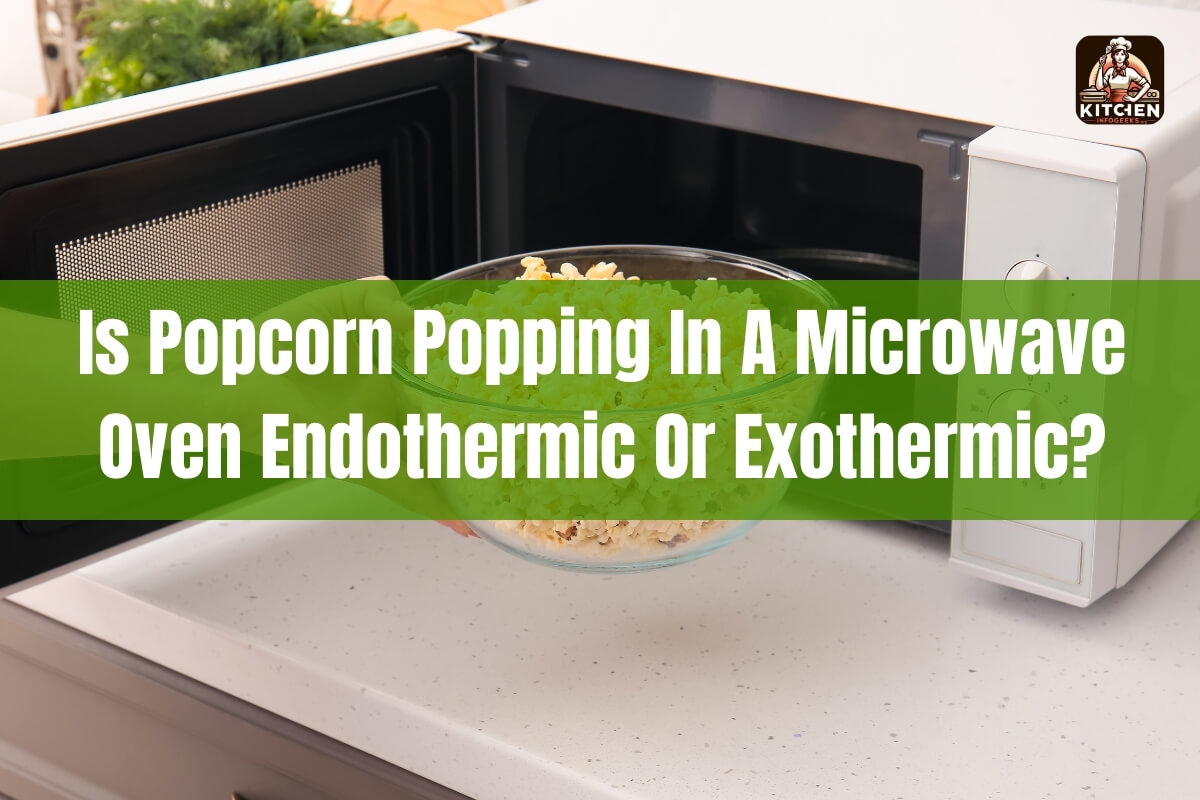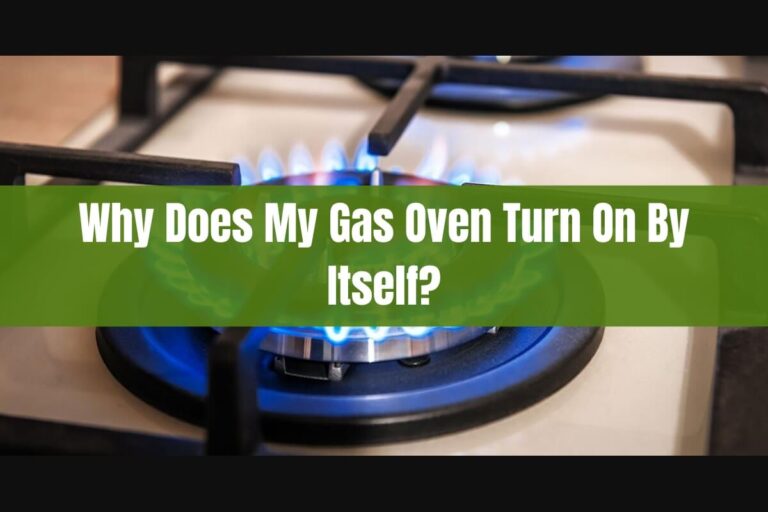
The short answer is that popcorn popping in a microwave oven is an endothermic process. This means that energy (in the form of microwave radiation) is absorbed by the popcorn kernels to make them pop. We’ll dive deeper into the science behind this phenomenon and explore the concepts of endothermic and exothermic reactions throughout this article.
Have you ever wondered why popcorn kernels pop and turn into light, fluffy snacks when heated in the microwave? The answer lies in understanding endothermic and exothermic reactions, which are fundamental concepts in chemistry and physics.
Endothermic and exothermic reactions are classified based on the energy transfer that occurs during the chemical process. In an endothermic reaction, energy (usually in the form of heat) is absorbed from the surroundings. Conversely, in an exothermic reaction, energy is released into the surroundings.
To better grasp these concepts, let’s first define and explore endothermic and exothermic reactions in more detail.
What are Endothermic and Exothermic Reactions?
Endothermic reactions are chemical processes that require an input of energy (heat) from the surroundings to proceed. In other words, they absorb energy. Some common examples of endothermic reactions include:
- Photosynthesis: Plants absorb sunlight energy to convert carbon dioxide and water into glucose and oxygen.
- Melting ice: Energy is required to break the intermolecular bonds holding the ice crystals together, resulting in liquid water.
- Cooking an egg: The egg absorbs heat from the pan or microwave to cook and solidify the proteins.
On the other hand, exothermic reactions are chemical processes that release energy (heat) to the surroundings. These reactions give off energy. Some examples of exothermic reactions include:
- Combustion: When a fuel (like wood or gasoline) burns in the presence of oxygen, it releases heat and light energy.
- Neutralization reactions: When an acid and a base are mixed, they release heat as they form a salt and water.
- Rusting of iron: The oxidation of iron metal to form iron oxide (rust) is an exothermic process that releases heat.
The Science Behind Popcorn Popping
Now that we understand the basic concepts, let’s dive into the science behind popcorn popping.
Popcorn kernels are dried seeds of a specific type of corn. Inside each kernel, there is a small amount of water surrounded by a hard, outer shell. When heated, the water inside the kernel turns into steam, and the pressure builds up.
In a microwave oven, the kernels are exposed to microwave radiation, which causes the water molecules inside to vibrate and generate heat. This heat energy is absorbed by the kernel, causing the pressure to increase until the outer shell can no longer withstand it.
At a certain temperature (around 180°C or 356°F), the kernel pops open, and the steam inside expands, turning the starchy interior into a fluffy, white mass that we know as popcorn.
Endothermic Nature of Popcorn Popping
Since the popcorn kernels absorb energy (in the form of microwave radiation) from the surroundings to generate the heat required for popping, the process of popcorn popping is considered an endothermic reaction.
The energy absorbed by the kernels is used to:
- Heat the water inside the kernel, turning it into steam.
- Build up pressure inside the kernel until it pops.
- Cook and expand the starchy interior into the fluffy, popped form.
Without this input of energy from the microwave oven, the popcorn kernels would not pop and transform into the delicious snack we all enjoy.
Other Examples of Endothermic and Exothermic Reactions
To further understand the concepts of endothermic and exothermic reactions, let’s explore some additional examples:
Endothermic Reactions:
- Evaporation: Liquid water absorbs energy from the surroundings to transition into a gaseous state (water vapor).
- Electrolysis: Electrical energy is absorbed to break down compounds into their elements or simpler compounds.
- Dissolving ammonium nitrate in water: This process absorbs heat from the surroundings, causing the solution to feel cold.
Exothermic Reactions:
- Hand warmers: Certain hand warmers contain a mixture of iron powder, salt, and other ingredients that undergo an exothermic oxidation reaction when exposed to air, releasing heat.
- Respiration: The breakdown of glucose in our cells to release energy is an exothermic process that generates heat.
- Freezing water: When water freezes and transitions from a liquid to a solid state, it releases heat to the surroundings.
Identifying Endothermic and Exothermic Reactions
Determining whether a reaction is endothermic or exothermic can be done through various methods, including:
- Temperature change: If the temperature of the surroundings decreases during a reaction, it is endothermic (energy is absorbed). If the temperature increases, it is exothermic (energy is released).
- Energy diagrams: Energy diagrams show the energy levels of reactants and products. If the products have a higher energy level than the reactants, the reaction is endothermic. If the products have a lower energy level, the reaction is exothermic.
- Enthalpy change: The enthalpy change (∆H) of a reaction indicates whether it is endothermic or exothermic. A positive ∆H value indicates an endothermic reaction, while a negative ∆H value indicates an exothermic reaction.
In everyday situations, you can often identify endothermic and exothermic reactions based on whether the surroundings feel cooler or warmer, respectively.
Importance of Understanding Endothermic and Exothermic Reactions
Understanding the concepts of endothermic and exothermic reactions is crucial for several reasons:
- Scientific literacy: These concepts are fundamental in chemistry, physics, and other scientific disciplines. Having a basic understanding promotes scientific literacy and helps individuals make informed decisions in their daily lives.
- Cooking and food preparation: Many cooking processes involve endothermic or exothermic reactions. Understanding these concepts can help improve cooking techniques and ensure food safety.
- Environmental awareness: Processes like combustion and chemical reactions in factories involve energy transfers that can impact the environment. Understanding endothermic and exothermic reactions can promote awareness and support efforts to reduce environmental impact.
- Personal safety: Some reactions, like combustion or explosions, are exothermic and can release significant amounts of heat and energy. Understanding these reactions can help individuals take appropriate safety precautions.
By understanding endothermic and exothermic reactions, we gain a deeper appreciation for the world around us and the processes that govern it.
In conclusion, popcorn popping in a microwave oven is an endothermic process. The popcorn kernels absorb energy from the microwave radiation, which generates heat and builds up pressure inside the kernels until they pop. This endothermic reaction transforms the hard, starchy interior into the light, fluffy popcorn we enjoy.
Understanding endothermic and exothermic reactions not only enhances our scientific knowledge but also has practical applications in cooking, personal safety, and environmental awareness. By exploring these concepts, we gain a deeper appreciation for the fascinating world of chemistry and physics that surrounds us.






